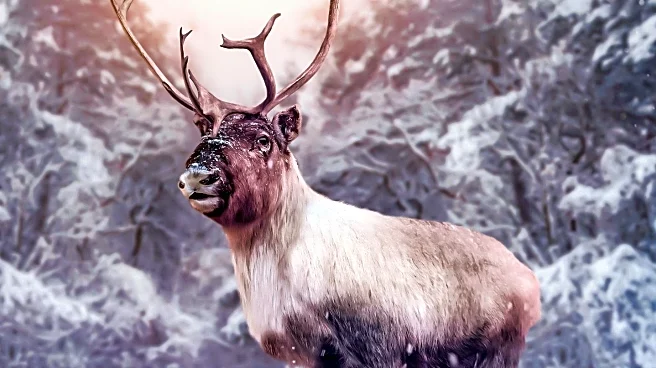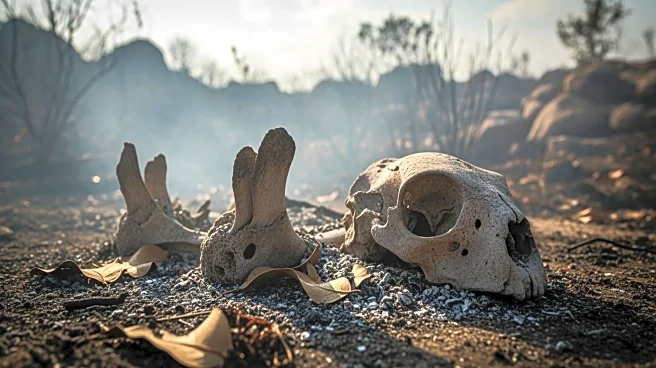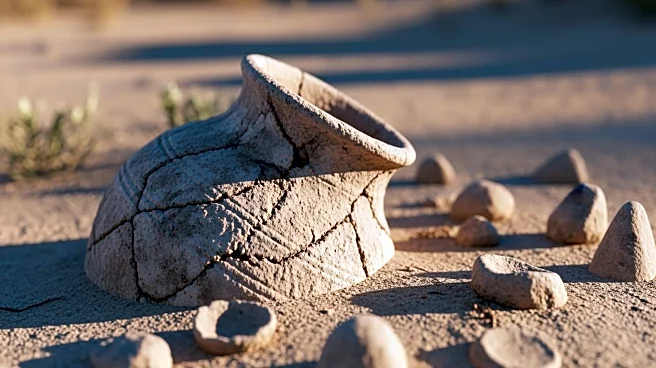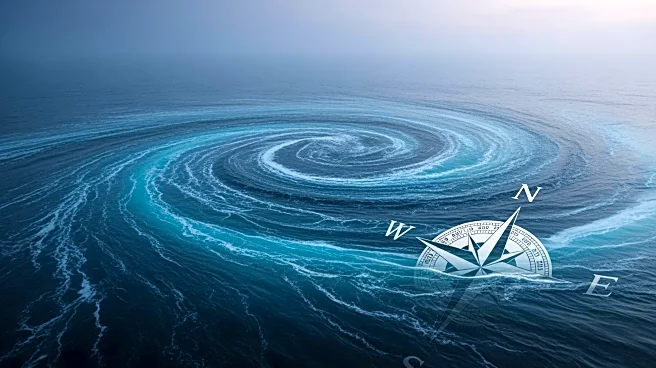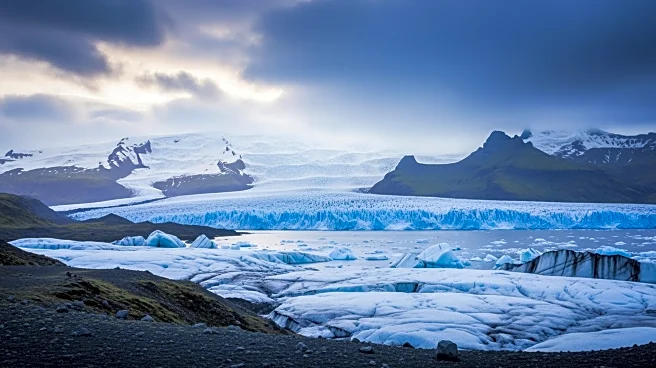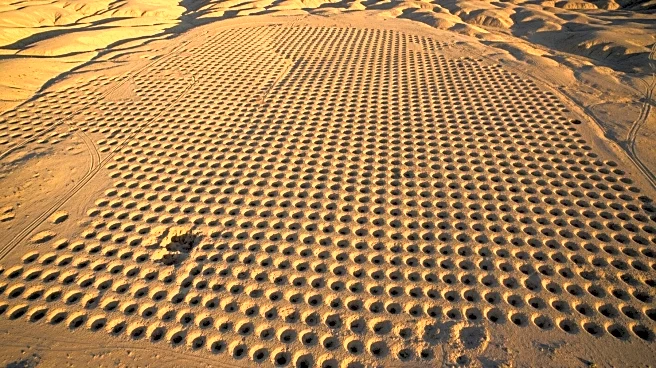What's Happening?
Archaeologists in Norway have uncovered a 1,500-year-old reindeer hunting facility from melting ice in the Aurlandsfjellet mountain plateau. The discovery includes wooden mass-capture fences, marked antlers,
weapons, and a decorated oar. The site, revealed by melting glaciers due to global warming, offers insights into historical hunting practices. The facility, composed of tree branches stacked into fences, was used to gather and kill reindeer. The artifacts, including iron spearheads and parts of bows, suggest a sophisticated hunting operation. The discovery is unique in Europe, highlighting the impact of climate change on archaeological research.
Why It's Important?
The melting ice in Norway is revealing significant archaeological finds, providing a unique opportunity to study ancient human activities and environmental conditions. These discoveries contribute to our understanding of historical societies and their adaptation to climate changes. The artifacts offer valuable data for researchers studying ancient hunting techniques and cultural practices. The exposure of such sites due to global warming underscores the urgency of addressing climate change, as it affects both natural and historical landscapes. The findings may influence cultural heritage preservation strategies and funding priorities.
What's Next?
Archaeologists will continue to study and preserve the uncovered artifacts, potentially displaying them in museums for public education. Further exploration of melting ice areas may reveal additional historical sites, prompting increased funding and research efforts. The discoveries could lead to collaborations between archaeologists and climate scientists to better understand the interplay between climate change and historical preservation. As global warming persists, similar finds may emerge in other regions, necessitating international cooperation in archaeological conservation.
Beyond the Headlines
The exposure of ancient sites due to climate change raises ethical questions about preservation and the impact of human activity on historical landscapes. The discoveries highlight the need for sustainable practices to protect both cultural heritage and the environment. The intersection of archaeology and climate science may lead to new methodologies for studying past climates and human adaptation.
